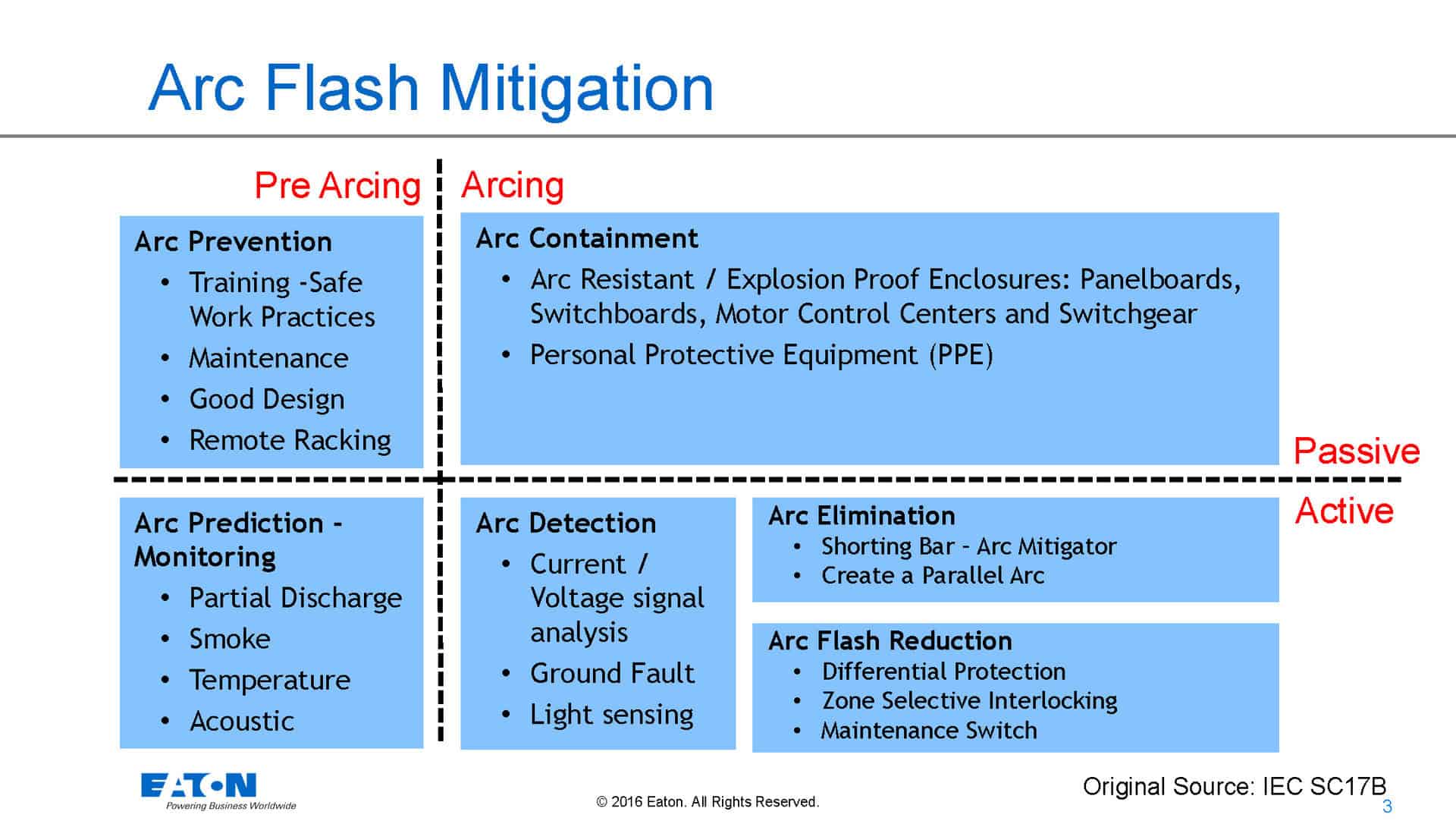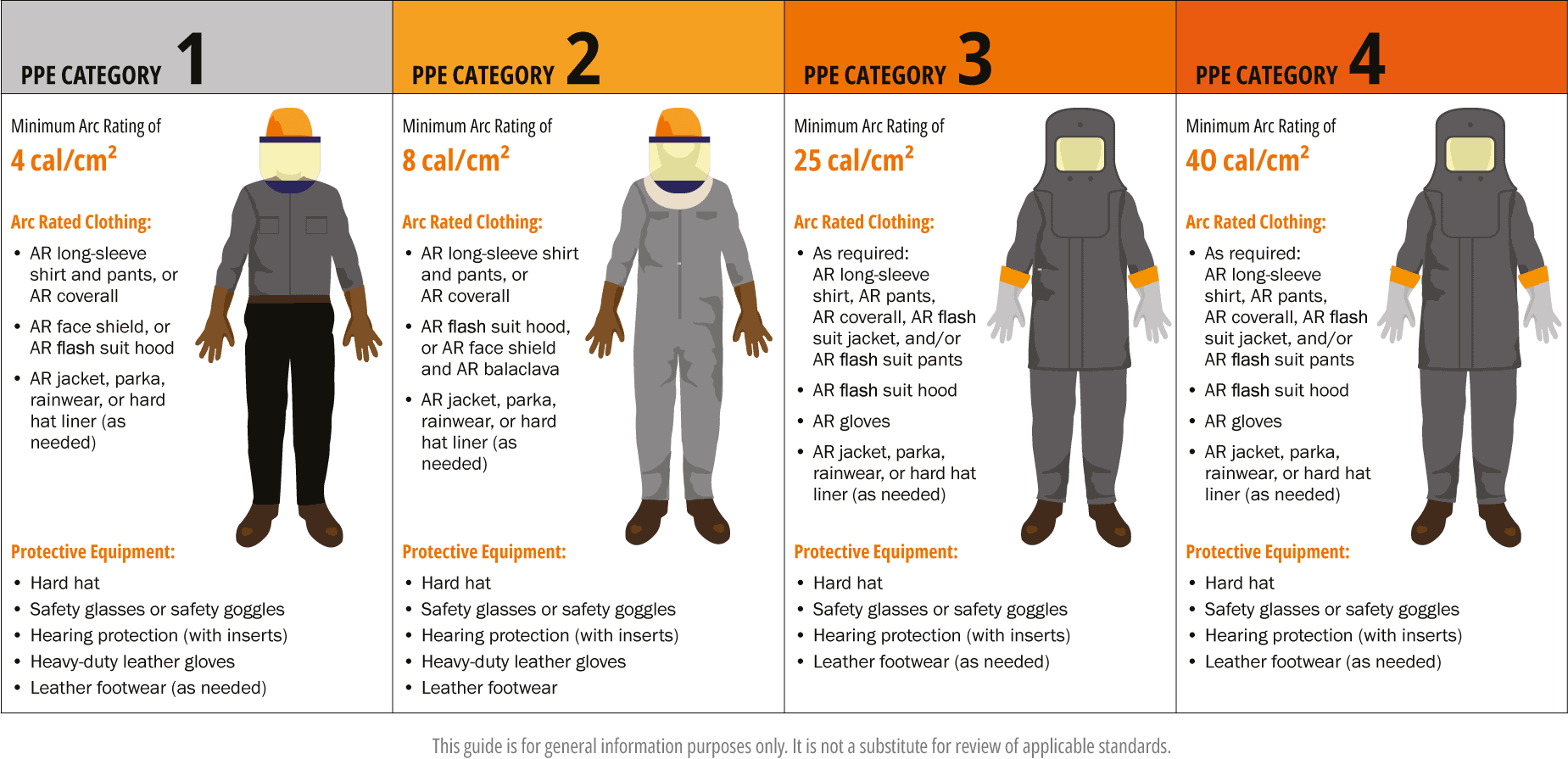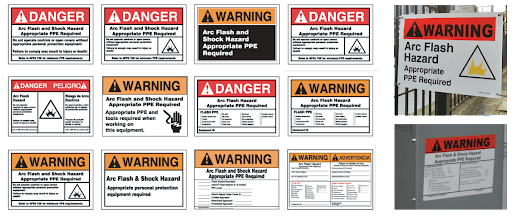Arc Flash Mitigation for Safer LV Switchboards
Introduction to Arc Flash
Arc flash is an electrical occurrence that can be extremely dangerous since it includes the release of energy caused by an electric arc. This phenomenon poses severe hazards to both personnel and equipment, making it a critical concern in electrical systems.
An arc flash's extreme heat and light can cause serious injuries, damage to equipment, and even fatalities. To guarantee the security and dependability of low-voltage switchboards it is critical to acknowledge the significance of arc flash occurrence mitigation. An arc flash is defined by NFPA 70E-2012 as ‘a dangerous condition associated with the possible release of energy caused by an electric arc’.
Understanding the Causes of Arc Flash
Numerous factors, including electrical faults, equipment failure, or accidental contact, can trigger arc flash incidents.
Electrical faults, such as short circuits or equipment malfunctions, can lead to the release of energy in the form of an electric arc. These arcs, if not properly controlled, can escalate into arc flash events.
Understanding the root causes of arc flash incidents is essential for implementing effective mitigation strategies and for ensuring safety measures in electrical systems.
Risk Assessment and Safety Standards
To detect dangers and mitigate arc flash occurrences, a thorough risk assessment is necessary.
Electrical engineers and contractors need to conduct a thorough system analysis, considering elements including worker proximity to electrified parts, fault currents, and equipment quality. [1] The goal is to quantify and prioritize risks, enabling the development of effective mitigation strategies.
Overview of Safety Standards:
To streamline the process, adhering to safety standards is crucial. The table below provides an overview of key safety standards related to arc flash mitigation:
| Safety Standard | Description |
|---|---|
| NFPA 70E | Focuses on electrical safety measures in the workplace |
| IEEE 1584 | Provides equations for arc flash hazard calculations |
| NESC (ANSI C2) | Addresses utility workers' safety near power lines |
| IEC 61482-1/2 | Specifies test methods and requirements for protective clothing against arc flash hazards |
This table serves as a quick reference for professionals involved in arc flash mitigation, ensuring compliance with industry standards, and enhancing overall electrical system safety.
Arc Flash Mitigation Strategies
Importance of Engineering Controls
Arc flash incidents necessitate a multifaceted approach to mitigation, with engineering controls playing a pivotal role.
These controls are aimed at reducing the danger of arc flash and improving the safety of electrical systems by modifying the design, operation, or configuration of equipment. [2] Arc-resistant switches, current-limiting devices, and remote operating techniques are a few examples.
The general safety of electrical systems is improved using these controls.
Importance of Proper Equipment Maintenance:
Proper maintenance is a cornerstone in reducing the risks associated with arc flash incidents.
Applying mitigation strategies for arc flash, Regular inspection, testing, and maintenance of electrical equipment ensures that components are in optimal condition and lowers the switchboard risk reduction rate.
Faulty or worn-out parts can significantly contribute to arc flash incidents. Therefore, a proactive maintenance strategy not only enhances equipment reliability but also serves as a key preventive measure against arc flash hazards. [3] Figure 1 shows a complete picture of Arc flash mitigation’s active and passive factors, incorporating pre-arcing and arcing factors.
Active Arc Mitigation:
Arc flash protection relays are advanced devices designed to detect and mitigate the impact of arc flash incidents in electrical systems. Specifically, the SEL 751 and ABB's TVOC relay. Please refer to Figure 2.
These relays employ sophisticated algorithms and sensors to rapidly identify abnormal conditions, sending signals to protective devices to interrupt the fault and minimize the severity of the arc flash.
By providing a swift and precise response, these relays enhance overall electrical system safety.
Maintenance mode selector switches
such as ERMS by ABB, RELT by Schneider Electric, and DAS by Siemens, are crucial components in active mitigation strategies. These switches enable operators to transition the LV switchboard into a maintenance mode, reducing the risk of arc flash incidents during maintenance activities. By isolating specific sections or functions, these switches enhance safety protocols, allowing essential work to be carried out without compromising overall system integrity.
Passive Arc Mitigation:
Passive mitigation measures focus on minimizing exposure to potential arc flash incidents. Remote controls positioned away from switchboards allow operators to manage and monitor operations from a safe distance.
Additionally, Schneider Electric's ARCBLOC is a passive mitigation solution that ensures safety by isolating and blocking arc flash energy.
These remote control and blocking mechanisms contribute to a comprehensive safety approach, limiting personnel exposure to potential hazards in LV switchboard environments.
Protective Equipment and Personal Safety Gear
Personal Protective Equipment (PPE) forms a critical line of defense against arc flash incidents.
The role of PPE is to safeguard individuals from the thermal and radiant energy released during an arc flash event. Essential components of arc flash PPE include flame-resistant clothing, face shields, safety glasses, gloves, and hearing protection.
Understanding the specific hazards and risk categories is vital for selecting the appropriate PPE.
Guidelines for Selecting and Using Protective Gear
Selecting and using protective gear involves a thorough assessment of the potential risks, voltage levels, and incident energy. The following guidelines aid in the proper utilization of PPE:
- Assessment of Hazard Risk Category (HRC): Determine the level of protection required based on the incident energy analysis.
- Proper Fit and Condition: Ensure that PPE fits correctly and is in good condition to provide effective protection.
- Training and Familiarity: Personnel should undergo training on the proper use and limitations of their assigned PPE.
- Regular Inspections: Conduct regular inspections to identify wear, tear, or damage and replace equipment as needed.
Arc Flash Warning Labels and Signage
Clear and understandable labeling is an integral aspect of arc flash safety. Warning labels and signage play a crucial role in alerting personnel to potential hazards, ensuring they are aware of the risks associated with specific equipment and know about proper arc flash protection.
Proper labeling enhances situational awareness and contributes to a safer work environment.
Compliance with Industry Standards
Compliance with industry standards for labeling and signage is imperative to convey consistent and universally understood messages.
Adhering to standards such as NFPA 70E and ANSI Z535 ensures that warning labels are standardized, conveying information in a format that is clear and recognizable across the industry.
Key Points:
- Standardized Labeling: Employ standardized labels and signage to convey consistent messages.
- Warning Symbols: Utilize recognized warning symbols to enhance visual communication.
- Legibility: Ensure labels and signage are legible, even from a distance, to provide timely warnings.
- Location Significance: Place labels strategically, emphasizing visibility in areas with heightened arc flash risks.
Engineering Solutions for Arc Flash Mitigation
Engineering solutions play a pivotal role in mitigating arc flash risks. By implementing design changes, organizations can significantly reduce the likelihood and severity of arc flash incidents.[4]
Strategies may involve equipment layout modifications, insulation enhancements, and the incorporation of arc-resistant technologies.
The Role of Arc-Resistant Switchgear
The specialized switchgear units are designed to withstand and redirect the energy released during an arc flash event, limiting the impact on personnel and equipment. Their deployment adds an extra layer of protection to electrical systems.
Some points to keep in mind are mentioned below:
- Engineering Enhancements: Explore design modifications to reduce arc flash risks systematically.
- Arc-Resistant Switchgear: Deploy specialized switchgear designed to withstand and redirect arc flash energy.
- Enhanced Protection: Prioritize models with advanced features, such as internal pressure relief and segregated exhaust channels.
- Specifications: Consider voltage, current, and short-circuit ratings when selecting arc-resistant switchgear.
Training and Education for Personnel
Ensuring the safety of personnel is paramount in arc flash mitigation. Training programs play a crucial role in educating workers about potential risks, safety protocols, and the proper use of personal protective equipment (PPE).
By fostering awareness and providing comprehensive education, organizations empower their workforce to respond effectively to arc flash hazards.
Key Points:
- Risk Awareness: Training programs instill a deep understanding of arc flash risks among personnel.
- Safety Protocols: Workers are educated on the correct usage of PPE and adherence to safety protocols.
- Empowered Workforce: A well-trained workforce contributes to a safer working environment and minimizes the impact of arc flash incidents.
Continuous Improvement and Future Considerations
Continuous improvement is essential in maintaining effective arc flash mitigation strategies. Regular monitoring of electrical systems, coupled with advancements in technology, ensures that mitigation measures remain robust.
Emerging technologies, such as predictive analytics and smart monitoring, offer new avenues for enhancing electrical safety measures.
It can be divided into three points:
- Ongoing Monitoring: Regular assessments and audits to identify areas for improvement.
- Emerging Technologies: Integration of predictive analytics and smart monitoring for proactive risk management.
Adaptability: The ability to embrace modern technologies and trends for enhanced arc flash mitigation.
Conclusion
Arc flash mitigation is an ongoing priority for ensuring electrical safety within switchboards. The combination of training, case studies, continuous improvement, and embracing emerging technologies forms a comprehensive strategy.
By adopting a proactive approach, organizations can enhance safety protocols, minimize risks, and create a secure working environment for their personnel.
References
- Zahalka, Gary, and Hugh Hoagland. "Arc flash hazard assessment requirements." 2007 IEEE Rural Electric Power Conference. IEEE, 2007.
- Doan, Daniel R., Jennifer K. Slivka, and Christopher J. Bohrer. "A summary of arc flash hazard assessments and safety improvements." IEEE Transactions on Industry Applications 45.4 (2009): 1210-1216.
- Gündüz, Berkay, Burak Dindar, and Ömer Gül. "Arc-flash hazard calculations in an electrical distribution system with distributed generation for electrical safety audit." International Journal of Safety and Security Engineering 11.5 (2021).
- Pígl, Jan. "Arc Flash Risk Assessment Using Methodology FMECA." 2018 IEEE International Conference on Environment and Electrical Engineering and 2018 IEEE Industrial and Commercial Power Systems Europe (EEEIC/I&CPS Europe). IEEE, 2018.
- D'Mello, Maurice, et al. "Arc flash energy reduction—Case studies." IEEE Transactions on Industry Applications 49.3 (2013): 1198-1204.



